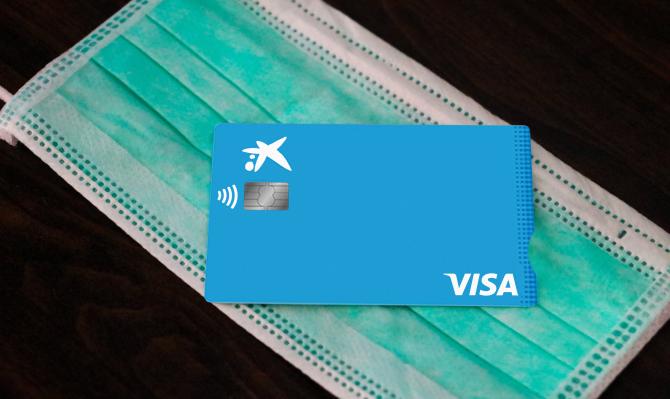Analysing private consumption during the COVID-19 crisis
We monitor the trends in private consumption and the impact of COVID-19 based on card purchases and cash withdrawals at CaixaBank POS terminals and ATMs.

- Expenditure by Spanish and foreign cards on point-of-sale (POS) terminals, plus cash withdrawals at CaixaBank ATMs, allow us to monitor the health of the economy, in real time, throughout the COVID-19 crisis.
- Card spending fell sharply, by around 50%, during the first few weeks of the lockdown. However, the lifting of the lockdown has been accompanied by a sustained, albeit still incomplete, recovery in spending.
- Sharp declines were registered in all categories except for spending on essential goods, which experienced a significant spike. The recovery is also proving to be quicker in spending on retail, leisure and catering and transport than it is in the category of tourism goods and services.
The outbreak of the COVID-19 pandemic makes it necessary to monitor the state of the economy in real time. Whereas the most well-known indicators are published with a substantial delay, debit and credit card spending on CaixaBank POS terminals plus cash withdrawal at CaixaBank ATMs provides a very high-frequency indicator of what is happening with private consumption.1 Using this indicator, below we analyse the weekly evolution of consumption throughout the COVID-19 crisis.
- 1This indicator is built based on individual transactions, so it can be calculated by the day or even for specific times of day. Furthermore, it should be noted that CaixaBank’s POS network is the largest in Spain and represents 27% of the total POS terminal turnover in Spain.
What is the impact of the crisis on private consumption according to card spending data?
The first chart shows the weekly evolution of card activity among both residents and foreigners. From the chart we can draw several conclusions. Firstly, there were changes in consumption patterns before the state of alarm was declared: spending by residents rallied in the first half of March due to higher consumption of essential products, as we shall see later on, whereas spending by foreigners began to fall due to the fear of the pandemic, the expectation of the oncoming lockdown and the cancellation of major events.2
- 2Such as the cancellation of the World Mobile Congress, which was due to take place from 24 to 27 February.

Secondly, the impact of the lockdown was very pronounced: between the second half of March and the first week of May, Spanish card activity fell by half, while that of foreign cards fell by around 90%. The figure for spending by residents is in line with the official data available to date: according to GDP data for Q1 2020 published by the National Statistics Institute, nominal private consumption fell by 6.3% quarter-on-quarter. This suggests a 40% collapse in this measure of private consumption in the second half of March, a figure not dissimilar to the 54% drop we observed in our indicator during the same period.3
Finally, the gradual lifting of the lockdown, which commenced on 4 May,4 has allowed for a significant recovery in spending by residents: spending went from falling by 49% year-on-year in the first week of May (the week before the lockdown measures began to be eased) to falling by just 11.1% in the last week of June. If we exclude e-commerce and cash withdrawals, residents’ spending is already in positive territory, with 0.9% year-on-year growth. However, the recovery in foreign spending has been much more restrained, reflecting the restrictions on international mobility that were not lifted until the end of June (and even then, only partially with certain countries).
In the second chart, we analyse the breakdown by type of expenditure. The impact of the crisis on the pattern of household spending has been very uneven. On the one hand, spending on essential goods rose sharply, even during the first half of March before the state of alarm was declared. On the other hand, all other categories of spending registered declines of more than 80% throughout the lockdown period. However, the speed of recovery has not been consistent across all categories of goods and services. More specifically, spending on retail (appliances, textiles, furniture, etc.), on leisure and catering and on transport has recovered more quickly than spending on tourism goods and services. In the case of retail spending (the category that has recovered the quickest), as early as the second week of June spending was already above the figure recorded during the same period last year, possibly due to the materialisation of pent-up demand for these types of goods that had accumulated during the lockdown. However, in the last week of June, the exhaustion of this factor has brought this category of spending back to neutral territory.
- 3To estimate the fall in consumption in the second half of March using Q1 GDP data from the National Statistics Institute, we assumed that private consumption in January, February and the first half of March grew at the same rate as the average growth in private consumption in 2019. To the extent that the data suggest higher growth in consumption in the first half of March, as we have seen, this methodology could be underestimating the fall in consumption in the second half of March.
- 44 May corresponds to the second week of May in the chart.

Also of note is the greater relative weight of e-commerce spending during the lockdown. As can be seen in the third chart, e-commerce (especially of the retail variety)5 steadily gained relative weight between the third week of March and the first week of May, reaching almost 17% of total spending. Nevertheless, as the lockdown was gradually lifted and Spaniards were once again able to make purchases in person, the relative weight of purchases of this type gradually decreased, eventually reaching levels similar to those seen prior to the COVID-19 crisis.
- 5Whereas in January and February 2020 e-commerce accounted for around 10% of all retail spending, in April and the first half of May it represented more than 80% of the total.

The lifting of the lockdown in detail
In the fourth chart, we show the evolution of card spending in three groups of provinces. These groupings are based on the speed with which each province advanced through the various phases of the lockdown de-escalation process.6 Group A comprises the provinces that advanced through the phases more quickly (i.e. whenever the de-escalation plan allowed it). Group B is the group of provinces that advanced through the phases with a one-week delay relative to group A. Finally, group C, which includes Barcelona and Madrid, is the group of provinces that took the most time to advance through the phases.
- 6The Government of Spain announced a phased plan to lift the lockdown which began on 4 May and ended on 22 June. The process involved four phases, from 0 to 3, with 0 being the most restrictive phase and 3 being the least restrictive.

As expected, the recovery in spending was greater in the provinces that advanced through the phases more rapidly. In particular, in the last week of May and the first week of June, whereas spending in group C (still in phase 1) was still slightly more than 20% below the figure for the previous year, in the provinces of groups A and B, which were already in phase 2, spending was already back at levels similar to the previous year. However, once group C advanced to phase 2 in the second week of June, the differences between the three groups faded almost completely.
The evolution of the proportion of inactive retail merchants7 offers another angle from which to measure the economy’s recovery process. As the last chart shows, the percentage of merchants with no transactions registered on their CaixaBank POS terminals rose to 73%. This figure shows the extent to which the lockdown measures forced a large number of businesses to close their doors to the public. Nevertheless, with the gradual lifting of those measures, businesses reopened and this percentage fell. With data up to the fourth week of June, the percentage of inactive CaixaBank POS terminals was 7% above the pre-crisis level.
- 7Measured by the percentage of retail merchants with CaixaBank POS terminals that registered no turnover.

In short, card activity data offer us high-frequency information that is very valuable for understanding how private consumption reacted over time. During the COVID-19 crisis, we have seen that the lockdown measures had a profound impact on household consumption and that there were significant differences depending on the type of goods and services in question. In addition, the card data show that the recovery in spending during the gradual lifting of the lockdown was very rapid, albeit incomplete, since at the end of June spending had not yet recovered to pre-crisis levels. With the advent of the new normal, we expect consumption to continue to recover, albeit much more gradually, underpinned by an improvement in spending on transport and in consumption in the field of leisure and catering. We also expect that domestic and foreign tourism spending, which is still at very low levels, will begin to gain momentum with the lifting of restrictions on mobility within Spain and the reopening of international borders with some countries. However, the impact of the current crisis on the labour market (we expect the unemployment rate to rise above 20% by the year end) suggests that consumption will take a long time to recover to its pre-crisis levels.
